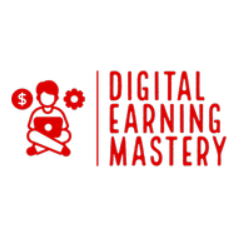In today’s competitive digital world, having a well-crafted online portfolio is crucial for anyone looking to showcase their skills, attract clients, or land a job. Whether you’re a graphic designer, web developer, writer, or photographer, your portfolio is your digital calling card. But how can you build an online portfolio that not only highlights your work but also converts visitors into leads or clients? Let’s dive into the key steps to make your portfolio truly effective.
1. Define Your Niche Before You Build an Online Portfolio
Before you build an online portfolio, it’s essential to define your niche and understand who you’re building it for. Are you targeting potential clients, employers, or both? Do you want to attract large corporations or small businesses? Knowing your audience will help you tailor your content and design to resonate with them.
Tip: If you’re unsure about your target audience, consider what makes your work unique. Highlight your strengths and specialties in your portfolio, whether that’s your creativity, technical skills, or ability to solve specific problems.
2. Choose the Right Platform to Build an Online Portfolio
When you build an online portfolio, selecting the right platform is key. Here are some of the most popular options:
- Website Builders (Wix, Squarespace, WordPress): Easy to use, with drag-and-drop functionality and customizable templates. Ideal for those who want a quick setup with minimal technical skills.
- Portfolio-Specific Sites (Behance, Dribbble): Perfect for designers, illustrators, and other creative professionals. These platforms allow you to share your work with a community and gain exposure.
- Custom Websites: If you have the technical skills or hire a developer, a custom website allows for complete control over design and functionality.
No matter what you choose, ensure it’s mobile-friendly. A potential client should have no problem navigating your portfolio on any device.
3. How to Build an Online Portfolio Home Page That Engages
Your home page is the first impression visitors will have of your work. It needs to be visually appealing, easy to navigate, and communicate your value right away. When you build an online portfolio, pay special attention to these elements:
- Clear Branding: Use a logo and consistent color scheme that aligns with your personal brand.
- A Strong Headline: Include a clear headline that explains who you are and what you do, like “Freelance Web Developer Specializing in eCommerce Sites.”
- Call to Action (CTA): Guide users with CTAs such as “Get in Touch” or “See My Work.”
4. Showcase Your Best Work in Your Online Portfolio
Your portfolio should feature a selection of your best work—nothing less. Quality over quantity is key here. To build an online portfolio that converts, include:
- Case Studies: Describe the problem, your process, and the results.
- High-Quality Images and Videos: Make sure all visuals are crisp and professional.
- Variety: Show your range—different project types, styles, or industries.
5. Optimize Your Online Portfolio for Conversions
It’s not enough to have a beautiful portfolio—it must drive results. When you build an online portfolio, consider:
- Clear Contact Information: Include a visible contact form, email address, and social media links.
- Client Testimonials: Add authentic testimonials that reflect your expertise.
- Social Proof: Show engagement through LinkedIn, Instagram, or other platforms.
6. Make It Easy to Navigate
A confusing or cluttered portfolio will push visitors away. Here’s how to make your online portfolio user-friendly:
- Simple Navigation: Use a clear, easy-to-find menu.
- Search Functionality: Helpful if you have a large collection of work.
- Fast Load Time: Ensure your site loads quickly to reduce bounce rates.
7. Add a Personal Touch to Your Online Portfolio with an “About Me” Page
A compelling “About Me” page is crucial when you build an online portfolio. Here’s what to include:
- Your Story: Talk about your background and passion for your craft.
- Your Skills and Achievements: Mention certifications, tools, or major clients.
- Your Process: Explain how you work and what clients can expect.
8. Boost Credibility by Adding a Blog to Your Online Portfolio
While optional, a blog can add serious value to your portfolio. Writing about your expertise helps demonstrate authority and improves SEO. It also makes your site more dynamic and shareable.
9. Ensure Mobile Optimization When You Build an Online Portfolio
Many people will view your portfolio on their phones. Make sure your design is responsive and easy to use on any screen. This is essential for delivering a good user experience and increasing conversions.
10. Use Analytics to Improve Your Portfolio’s Performance
Once your site is live, track performance using Google Analytics or similar tools. Monitor bounce rate, time on site, and conversions. These insights will help you tweak and improve your portfolio over time.
Conclusion
To build an online portfolio that converts, you need more than just pretty visuals. You need a clear structure, optimized content, and a strong understanding of your audience. By following the steps above, you can create a digital showcase that not only reflects your talent but also helps you land clients, projects, or job opportunities. Start today, and build an online portfolio that truly works for you.
